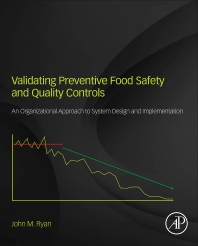Sayler on Safety
Hydrolized vegetable protein, spices, instantized milk powders, peanuts and peanut products. Who would have guessed that the most significant food safety problem for the U.S. food industry would be ingredients?
It has become very obvious to many dairy companies that the extensive investment in food safety and quality can be quickly disrupted by one ingredient supplier.
A review of major food recalls in the United States over the past year demonstrates a pattern of problems related to ingredients. The most recent example is an ingredient called hydrolyzed vegetable protein, or HVP, recalled by Las Vegas-based Basic Food Flavors, because of the presence of salmonella. This product is widely used as a flavor enhancer in many foods. Another example was the salmonella found in Vietnamese pepper spices used as an ingredient in Italian-style sausage products produced by Rhode Island’s Daniele Inc. Last fall, Minnesota-based Plainview Milk Cooperative initiated a broad recall of their instantized milk powder because of salmonella concerns. The most well-known and largest ingredient recall in U.S. history was Peanut Corp. of America’s peanut and peanut products.
While we could focus on specific failures, these examples represent a wider pattern of ingredient supplier problems that need immediate attention to “fix” the root cause. This fix requires coordinated efforts by different parties with varying resources and interests. “Fixing” strategies must include the role of farmers, raw-ingredient handlers and transporters, ingredient processors and ingredient end users, and depend on state and federal government enforcement of existing food safety regulations.
What specific fixing strategies are required from U.S. dairy processors? It is clear that the past practice of relying on certificates of analysis and written letters of guarantee from ingredient suppliers attesting to the safety and quality of ingredients is no longer sufficient. These tools are self-limiting in today’s food safety world.
Today, most food contaminations are intermittent, and locating on-again, off-again contamination through testing alone can result in a false sense of security. The bar of “due diligence” to ensure safe, high-quality ingredients has been significantly raised for the U.S. dairy industry.
To meet this new level of due diligence, dairy processors must become knowledgeable on every food ingredient used. If a checklist for each ingredient were developed for dairy processors, it would address the following:
• What raw materials were used to “make” the ingredient? What is their source? What are their food safety characteristics such as pH and water activity?
• How are the ingredients processed? What common processing equipment is used and is there critical processing safety or quality benchmarks, such as temperature?
• Who are the ingredient processors, are they domestic or foreign, and what is their individual track record such as a recent market withdrawals?
• What are common food safety practices in the ingredient industry in general and specific to an individual ingredient supplier? Do they meet dairy industry expectations?
• What are the transport modes and contamination possibilities at each step from raw material origin to ingredient processing to the door of the dairy plant?
• What are common timeframes for movement of a specific ingredient through the supply chain, starting from storage of raw materials at the ingredient supplier through to the dairy plant?
• What packaging material is used to protect the food ingredient from post-processing contamination during its transport from the ingredient supplier to the dairy plant?
By gathering information to address these items, dairy companies will be able to identify risks associated with all food ingredients and make choices about food ingredient sourcing and alternatives.
The next step should be mandatory third-party certification of each ingredient supplier’s processing and handling locations by one of the five schemes endorsed by the Global Food Safety Initiative. In the United States, this usually means the Safe Quality Food or British Retail Consortium systems. Loss of certification should result in discontinuing the use of that ingredient supplier. If resources are available, dairy companies should also consider using their own properly trained staff to conduct annual on-site audits of key ingredient suppliers to obtain direct information about the ingredient supplier’s food safety and quality practices.
Any contract or written agreement with an ingredient supplier should include a clear description of the specifications or expectations for each food ingredient. The agreement should also stipulate that any changes in ingredient raw materials, formulation, processing or equipment need to be conveyed to the dairy plant immediately.
By developing an extensive understanding of the ingredient industry and the ingredients used in dairy products, dairy companies will become part of the fix and avoid weaknesses in the food chain. This effort will also significantly increase the industry’s level of due diligence.
It has become very obvious to many dairy companies that the extensive investment in food safety and quality can be quickly disrupted by one ingredient supplier.
A review of major food recalls in the United States over the past year demonstrates a pattern of problems related to ingredients. The most recent example is an ingredient called hydrolyzed vegetable protein, or HVP, recalled by Las Vegas-based Basic Food Flavors, because of the presence of salmonella. This product is widely used as a flavor enhancer in many foods. Another example was the salmonella found in Vietnamese pepper spices used as an ingredient in Italian-style sausage products produced by Rhode Island’s Daniele Inc. Last fall, Minnesota-based Plainview Milk Cooperative initiated a broad recall of their instantized milk powder because of salmonella concerns. The most well-known and largest ingredient recall in U.S. history was Peanut Corp. of America’s peanut and peanut products.
While we could focus on specific failures, these examples represent a wider pattern of ingredient supplier problems that need immediate attention to “fix” the root cause. This fix requires coordinated efforts by different parties with varying resources and interests. “Fixing” strategies must include the role of farmers, raw-ingredient handlers and transporters, ingredient processors and ingredient end users, and depend on state and federal government enforcement of existing food safety regulations.
What specific fixing strategies are required from U.S. dairy processors? It is clear that the past practice of relying on certificates of analysis and written letters of guarantee from ingredient suppliers attesting to the safety and quality of ingredients is no longer sufficient. These tools are self-limiting in today’s food safety world.
Today, most food contaminations are intermittent, and locating on-again, off-again contamination through testing alone can result in a false sense of security. The bar of “due diligence” to ensure safe, high-quality ingredients has been significantly raised for the U.S. dairy industry.
To meet this new level of due diligence, dairy processors must become knowledgeable on every food ingredient used. If a checklist for each ingredient were developed for dairy processors, it would address the following:
• What raw materials were used to “make” the ingredient? What is their source? What are their food safety characteristics such as pH and water activity?
• How are the ingredients processed? What common processing equipment is used and is there critical processing safety or quality benchmarks, such as temperature?
• Who are the ingredient processors, are they domestic or foreign, and what is their individual track record such as a recent market withdrawals?
• What are common food safety practices in the ingredient industry in general and specific to an individual ingredient supplier? Do they meet dairy industry expectations?
• What are the transport modes and contamination possibilities at each step from raw material origin to ingredient processing to the door of the dairy plant?
• What are common timeframes for movement of a specific ingredient through the supply chain, starting from storage of raw materials at the ingredient supplier through to the dairy plant?
• What packaging material is used to protect the food ingredient from post-processing contamination during its transport from the ingredient supplier to the dairy plant?
By gathering information to address these items, dairy companies will be able to identify risks associated with all food ingredients and make choices about food ingredient sourcing and alternatives.
The next step should be mandatory third-party certification of each ingredient supplier’s processing and handling locations by one of the five schemes endorsed by the Global Food Safety Initiative. In the United States, this usually means the Safe Quality Food or British Retail Consortium systems. Loss of certification should result in discontinuing the use of that ingredient supplier. If resources are available, dairy companies should also consider using their own properly trained staff to conduct annual on-site audits of key ingredient suppliers to obtain direct information about the ingredient supplier’s food safety and quality practices.
Any contract or written agreement with an ingredient supplier should include a clear description of the specifications or expectations for each food ingredient. The agreement should also stipulate that any changes in ingredient raw materials, formulation, processing or equipment need to be conveyed to the dairy plant immediately.
By developing an extensive understanding of the ingredient industry and the ingredients used in dairy products, dairy companies will become part of the fix and avoid weaknesses in the food chain. This effort will also significantly increase the industry’s level of due diligence.
Looking for a reprint of this article?
From high-res PDFs to custom plaques, order your copy today!








